What’s In A Brand Name? Lessons Learned From 5 Brands Who Made A Change
/0 Comments/in Brand Name, Brand Name Creation /by Lorraine CarterA strategically selected brand name can convey immediate and implicit value. It can command attention and communicate meaning. Though a brand is comprised of many elements, from the brand promise and brand mission to the brand voice and brand personality, the brand name instantly triggers thoughts of all of these components in the mind of a customer. Alongside the logo, the brand name is the single most recognizable element of a brand’s identity, and it can make or break your brand recognition.
Branding is NOT marketing or design but the bedrock strategy supporting and directing your whole business so your brand name creation takes it’s brief from the strategy underpinning your brand.
Simply put, your brand name is no small matter. So what happens when the name you’ve chosen is no longer serving your business goals or helping you connect with your audience? It might be time for a change. Here, we’ll examine five brands that changed their names to accomplish diverse objectives and deconstruct what can be learned from each example.
1. Brand Name LANDESK to Ivanti
LANDESK was founded more than 25 years ago as an IT systems management provider. Since its inception, the company has acquired several other brands with various service offerings, from network security to supply chain management. They’ve also launched a number of new products like a support ticketing manager and various analytics tools, all designed to help businesses operate more efficiently.
Though the company has worked hard to stay on the cutting edge of information technology, its original name–LANDESK–felt neither modern nor innovative in recent years. For starters, the name is the combination of the words LAN and desk, two terms that feel antiquated in an increasingly mobile world. Additionally, many customers had trouble separating the company–now a major technology solutions provider–from its original, single product, the LANDESK management suite.
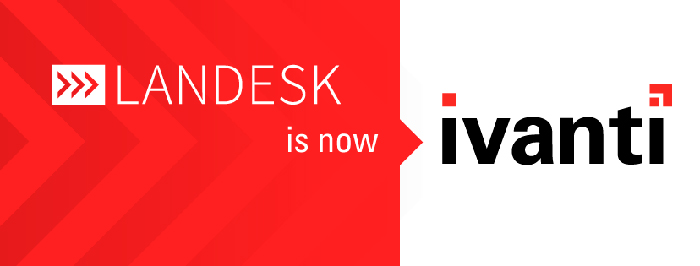
Image via ncsi.us
When Steve Morton took the helm as CMO in 2013, he knew a name change was in order to fully usher the company into the digital era. By the start of 2017 the name change to Ivanti was complete. As Morton explained to Forbes, it was less about the name itself than about everything the name stands for[1].
By evolving not just the name but the brand identity it represents, Ivanti has been able to ensure it’s serving all segments of its customer base (management, security, supply chain, et. al.) while conveying assurance that the brand is at the forefront of evolving technologies for business.
Watch below as Ivanti CEO Steve Daly explains how the brand mission has evolved alongside the technology the company provides.
On the fence about a potential name change for your brand? A brand audit will help determine if your name is negatively impacting your brand recognition or company profits. Feel free to get in touch if you’d like us to give your brand and health check for you. Brand audit outcomes determine areas of weakness and strength together with opportunities for innovation and growth — and the degree of change if needed.
Alternatively, if you prefer to undertake the brand auditing process yourself, our Auditing Analysis Accelerator™ is the programme for you. It walks you through, step-by-step how to audit your brand, how to evaluate the level of brand awareness among your target audience and identify opportunities to improve the overall strength of your brand — which may include a name change.
Related: Brand Naming, Top Ten Methods for Brand Name Creation
2. Brand Name Sovereign Bank to Santander
In 2008, US-based Sovereign Bank was acquired by Spanish banking giant Santander, which is a household name in much of Europe. Though Sovereign originally opted to retain its name, the institution met with significant struggles during the Great Recession and faced subsequent challenges with its public image. In an effort to move away from its damaged reputation and embrace the global brand recognition enjoyed by its parent company, Sovereign eventually opted to adopt the Santander brand name and incorporate it into all of its brand collateral [2].

Image via Wikipedia

Image via Wikipedia
In the video below, Santander CMO Kathy Klingler describes the process of introducing the Santander brand name to the US market. As she explains, the transition had to be conducted with great care so as not to confuse or alienate existing Sovereign bank customers–a critical consideration when undergoing a brand name change.
As demonstrated by Santander, a carefully planned and executed name change can be an effective way to move into a new market (international versus US-centric) and evolve as a company (shedding negative associations from the financial crisis).
If you’re considering a name change and you’d like professional branding input or want access to the whys, whats and hows, and all the other critical factors in the brand strategy process behind a name change then get in touch? Alternatively book one of our transformational workshops, brand building intensives or masterclasses.
The Persona Brand Building Blueprint™ Mastermind empowers you to build your brand strategy, raise the visibility of your brand, increase sales, reduce customer acquisition costs and position your brand as the №1 choice for your customers.
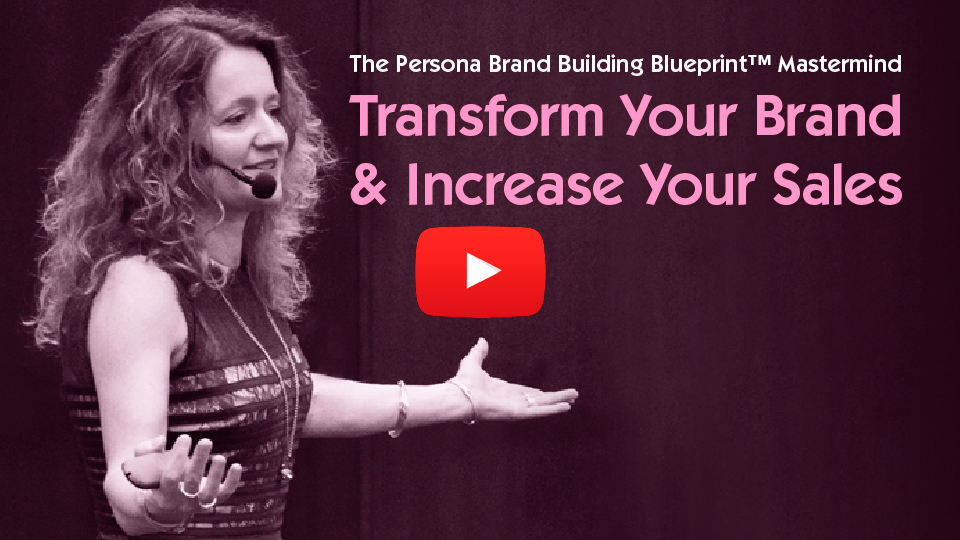
Build your standout brand at the Persona Brand Building Blueprint™ Mastermind with Lorraine Carter
3. Brand Name Sound of Music to Best Buy
Best Buy is known the world over as the place to go if you need a computer, cell phone or television. But did you know the retailer originally started out as a mom and pop hi-fi stereo store? The brand, originally named Sound of Music, got its start in Minnesota in the 1960’s and soon expanded to multiple locations throughout the state. Even as its storefronts spread, though, the brand struggled to expand its customer base beyond the core buyer group of 15- to 18-year-old males.
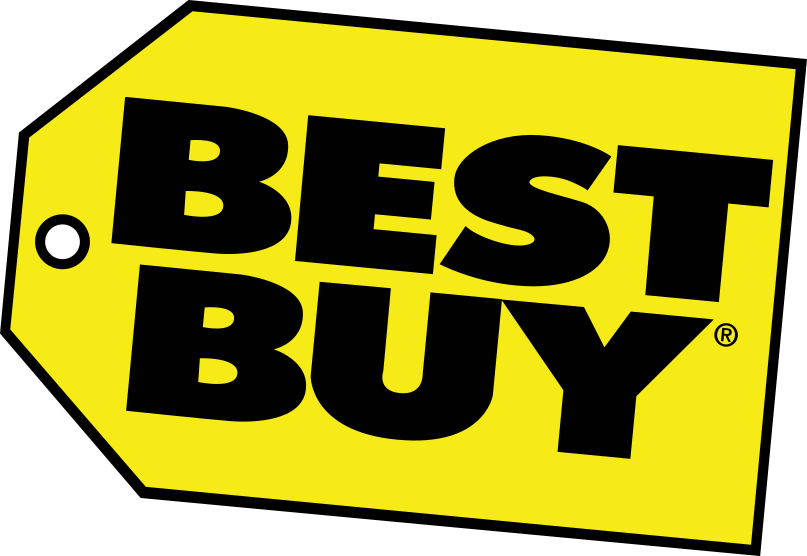
Image via Best Buy
When a tornado destroyed Sound of Music’s biggest store in 1981, it turned out to be a blessing in disguise, providing key insights on how to widen the customer base.
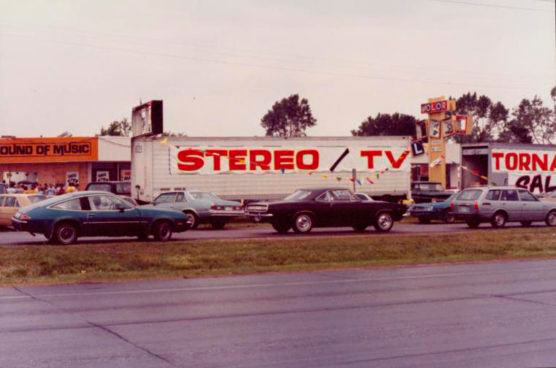
Sound of Music’s “Tornado Sale” – Image via BestBuy.com
In a massive post-tornado clearance sale, founder Richard Schulze learned that his customers craved three things: lower prices, more products to choose from, and a “superstore” shopping experience. This feedback led to a dramatic product expansion, new store model and shift in brand name to accompany the changes, from Sound of Music to Best Buy Superstores.
The video below shares more details about the transition (watch starting from 1:13)
If your goal is to reach a larger customer base, like Best Buy in the 1980’s, adjusting your core product offering or service model is one way to do it. A brand name change is a practical way to signal this shift in the minds of customers.
Related: Is It Time For A Rebrand? 4 Things To Consider Before Making The Change
4. Brand Name 6SensorLabs to Nima
In 2013, startup 6SensorLabs announced plans for an innovative sensor device with the ability to instantly identify gluten in food. Hailed as a godsend among food allergy sufferers, the debut sensor product, Nima, was a home run with customers. In the years that followed Nima’s release, the company went on to introduce a suite of related food allergy products like test kits, capsules and an app. Even so, most customers knew the brand best by the name of the debut product, Nima, and referred to the company as such instead of 6SensorLabs.
Related: Brand Hierarchy Fundamentals for Multiple Brands To Avoid Confused Customers or Stagnant Sales
The company’s founders were faced with a choice: hold onto their lesser-known name and battle brand confusion for years to come, or embrace the new name and the brand recognition that came with it from customers. The founders opted for the latter and officially changed the brand name to Nima in 20163.

Image via FinSMEs.com

Image via nimasensor.com
Nima co-founder Shireen Yates explained to Entrepreneur that the name change not only eliminated confusion but helped to cement a selection of key brand values.
“Nima means fair and equitable [in Persian],” Yates said. “It really stands for everything that we’re doing in regards to food transparency, giving everyone a chance of enjoying their meal and having that peace of mind.”
Thus, going with Nima for the brand name made sense in the greater brand strategy.
Related: Brand Renaming, Name and Tagline Change Considerations
Branding is about much more than a name; it’s the feeling, personality and promise associated with a company in the hearts and minds of customers. When your brand name is out of sync with this customer perception, as was the case with the name 6SensorLabs, a name change can be an effective tactic to bring things into alignment.
Your brand name is a recognition device used to convey a clear and consistent identity to customers. Don’t leave it up to chance! Brand name origination is part of our core expertise. To learn more about our brand naming services, get in touch at T: +353 1 8322724 or by clicking here. We’d love to talk with you!
5. Brand Name Huffington Post to HuffPost
When news broke of founder Arianna Huffington’s departure from her namesake news outlet in 2016, there was much speculation about the future of The Huffington Post. Would there be panic among investors? Would the shake-up add to the existing turmoil within the editorial department? For much of 2016, there remained a great deal of uncertainty surrounding the platform.
Then, in 2017, the company announced its first major branding move since Huffington’s exit: a new name and reimagined website, which represented a major shift in the brand’s look and feel4.
For HuffPost, the name change was meant to serve as a turning point. It not only represented the separation from Arianna Huffington, but a step forward from some of the issues that had plagued the brand in the past, like the struggle to become profitable.
A leadership change is one of the most common reasons for a change in brand name or a complete rebrand. It can also be used to signal other shifts, like a change in ownership, target market, brand direction and more. For HuffPost the timing of the new look and feel, website and logo was a natural time to make a brand name change, as well.
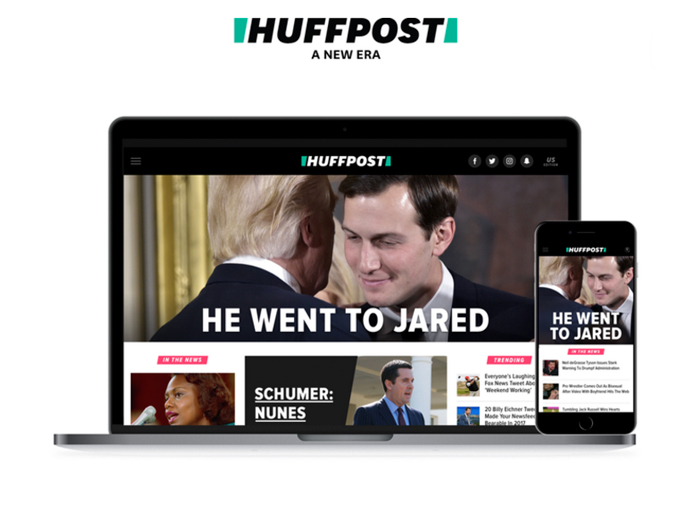
Image via MashableUK © HuffPost
Related: Rebrand or Refresh? That is the Question
We’ve talked about many of the benefits brands can gain from making a name change, but it’s not a decision that should be taken lightly. It’s one that should be considered as a critical piece of your overall brand strategy and only executed only after conducting a brand audit.
To determine if your brand name (or any other pieces of your brand identity) are holding you back from growing your business, consider getting a professional brand audit health check. If the findings from your brand audit determine a name change will enable you to achieve your specific business objectives and brand goals, aligned with your business plan, then a name change is in order.
If you prefer the DIY route check out the Auditing Analysis Accelerator™ Programme. It’s a step-by-step process taking you through the key elements of a typical brand audit that will teach you how to audit the health of your brand and identify points of weakness and strength together with opportunities for innovation and growth. The outputs then determine your next best step to improve your bottom line.
Related: Brand Audits – How to Use One to Grow Your Profits
Questions To Consider:
- What objectives were you hoping to achieve when your first selected your brand name? Have those objectives changed since then? If so, does your brand name serve your new objectives?
- Who are your target audiences? Is your brand name relevant for all of them, or does it alienate certain segments?
- Is your brand name recognizable? Do your customers know and remember it? Is there another word or name they more commonly associated with your brand?
- What, if any, shifts in leadership, business structure, brand mission, brand personality or brand identity have taken place since you chose your brand name? Are any of them out of alignment with the original name?
If you’re considering a name change and you’d like professional branding input or want access to the whys, whats and hows, and all the other critical factors in the brand strategy process behind a name change then get in touch? Alternatively book one of our transformational workshops, brand building intensives or masterclasses.
The Persona Brand Building Blueprint™ Mastermind empowers you to build your brand strategy, raise the visibility of your brand, increase sales, reduce customer acquisition costs and position your brand as the №1 choice for your customers.
It also provides you with the strategic direction and creative briefs for brand naming, marketing and design so you get an effective return on your investment because its the bedrock strategy underpinning your whole business.

Build your standout brand at the Persona Brand Building Blueprint™ Mastermind with Lorraine Carter
Sources:
- https://www.forbes.com/sites/johnellett/2017/05/16/when-your-company-name-no-longer-applies-change-it/#779e96ed5c85
- http://archive.boston.com/business/articles/2011/09/28/sovereign_changes_its_name_to_santander/
- https://www.entrepreneur.com/article/276115
- http://mashable.com/2017/04/25/huffpost-redesign/#iLVGD6_BHOqK
Eleven Branding Lessons: Keeping a Sharp Eye on Your No.1 Asset
/0 Comments/in Brand Audit, Brand Auditing, Brand Audits, Brand Collateral, Brand Health Check, Brand Name Creation, Brand Name Origination, Brand Personality, Brand Relaunch, Brand Relevance, Brand Reputation, Brand Research, Brand Risk Management, Brand Risk Mitigation, Brand Strategy, Branding, Customer Engagement, Rebranding Mistakes, Situation Analysis /by Lorraine CarterOnce the heavy lifting in creating your brand is done, basic care and ongoing maintenance to preserve and protect it must not be overlooked. “Nurture your brand as you would a child,” says brand expert Jagdeep Kapoor, author of the bestselling “Twenty-Four Brand Mantras.” Just like all living things, a brand requires nurturing to remain healthy and to grow.
From creation through to end-of-life, a brand can encounter unexpected challenges arising from all sorts of corners, not just from the competition. From a poorly planned campaign to a corporate takeover, and from an outspoken CEO to a badly chosen name, a few examples that made recent headline news are worth a closer look to form takeaways and lessons learned for brand owners and managers everywhere.
Case Study: Rhode Island Is Not Iceland – Tourism Campaign Has Too Many Mistakes, Says Governor
America’s smallest state ought to know that details matter. When Rhode Island set out to create its new $5 million integrated tourism and new business promotion campaign, big guns were brought in. Who better, you might think, than Milton Glaser, the graphic designer who created the iconic I ❤ NY campaign?
Lesson #1: Politics matter! Milton Glaser and Havas PR North America, chosen for the PR contract, are New York City firms, not Rhode Island firms.

The newly launched campaign featuring a slogan “Cooler & Warmer” left many people cold…and guessing. What does it mean, they queried across social media channels. One Commerce Corporation board member said he saw “no emotional connection” and “no personal brand to the state or the people.”[1]

An ATOM Media executive in Providence, RI said, “Usually a slogan is something that people know instantly and understand. I think the fact that you need to explain it could be a little problematic.”[2] That sentiment was echoed by the owner of a Newport, RI marketing and graphic design agency, who said the slogan, “Doesn’t make any sense to me. In order to create a good tagline you have to have a brand strategy.”[3]
Lesson #2: Brand strategy comes before name, tagline and logo creation.
Lesson #3: Graphics must reflect and express a brand’s persona, and that must be one that resonates with people, not one that needs to be explained.
Lesson #4: Social media matters! A tagline containing a special character or symbol (such as the ampersand in Cooler & Warmer) won’t function as a hashtag[4]. Ever.
That wasn’t all. A YouTube video released with great fanfare was yanked within 24 hours when it was pointed out, “Hey, that’s not Rhode Island — that’s the Harpa concert hall and conference center in Reykjavik. Iceland.”[5] Other footage featured a highly acclaimed restaurateur who had already moved his operation to Boston. And the video also claimed 20 percent of America’s historic sites are in the little Ocean State, when it’s actually 2 percent.[6]
This was the ‘alternative’ Rhode Island Cooler & Warmer ‘spoof’ version produced by The Wonderful Show!
Lesson #5: Accuracy matters! The state’s marketing director resigned. Media partners are returning their contract fees to the taxpayers. Cooler & Warmer was scrapped.
After an initial attempt — picked up internationally, even by The China Post[7] — Governor Raimondo took a different tack at a news conference, saying, “One of the things I’ve learned from listening and engaging with people is that there should’ve been more public participation in this thing from the get-go.”[8]
With that in mind, Newport Buzz posted a public contest, pitting “Cooler & Warmer” against the previous slogan, “Discover Beautiful Rhode Island,” and a local amateur entry, “Sea to Believe.” With 15,000 votes in so far, the local resident’s idea is clear away the favorite with 80 percent, versus the traditional one at 18 percent and the costly new-fangled entry coming in dead last at 2 percent.
Lesson #6: There’s no room for ivory tower decision-making. Consultation is critical, brand audits are essential.
More Takeaways: All brands should consider geographical location of their contractors and supply chains when performing due diligence in order to avoid potential embarrassment. The look and feel of the brand via tagline, logo, adverts, all brand collateral, media and all touchpoints must resonate with its audience, make an emotional connection and be authentic. The importance of fact-checking and the need to eliminate exaggerated claims cannot be overstated. Handle a brand crisis with carefully thought-out strategy, not something to poke fun at.
Case Study: Brand Takeover – Richard Branson Reacts to Virgin America Sale
Sir Richard Branson is himself a brand who runs a brand that has sub-brands. The self-made billionaire wasted no time addressing the Alaska Airlines purchase of Virgin America — just in case of any tarnish rubbing off on the overall Virgin brand name.

Image via www.virgin.com and Virgin America
Well aware of the fierce loyalty of Virgin America fans for what they consider a superior product at parity prices, Branson let everybody know, “I would be lying if I didn’t admit sadness that our wonderful airline is merging with another. Because I’m not American, the US Department of Transportation stipulated I take some of my shares in Virgin America as non-voting shares, reducing my influence over any takeover. So there was sadly nothing I could do to stop it.”[9]
Lesson #7: Confront a brand crisis. Deal with it, manage it, communicate about it professionally and do not hide from it.
In a statement that’s a pleasure to read in its entirety, due to the passion readers can sense, Branson goes on to discuss the importance of the brand, “…once Alaska witnesses first-hand the power of the brand and the love of Virgin America customers for our product and guest experience, they too will be converts and the US traveling public will continue to benefit…”
Even in the face of a forced merger, the rest of the Virgin brand received immediate reinforcement from the top. “Our Virgin airline has much more to do, more places to go, and more friends to make along the way,” Branson stated.
Lesson #8: Find the silver lining. Notice how Branson uses this corporate takeover event as an opportunity to reiterate the ongoing benefits of a Virgin travel experience.
Case Study: Tarnished Brand – Trump Empire?
In his run on the US presidency, Donald Trump’s raucous attention-grabbing style and statements is affecting custom at Trump Collection branded apartment towers, hotels, resorts and golf courses.

Image via http://www.npr.org
Polling and consulting firm Penn Schoen Berland survey results found that 45 percent of respondent US residents with annual earnings of $200,000 or more will make a point of not visiting a Trump hotel or golf course over the next four years. Within that group, 77 percent indicated they would actually boycott the Trump brand.[10]
Lesson #9: From the CEO to front line employees to the back of the house operation, your brand is represented by everyone in each and every customer (and potential customer) interaction. Everyone is, or should be, an ambassador for your brand.
Case Study: Stay Relevant, For The Times They Are A-Changin’
In the 1980’s, four-time Olympic diving gold medalist and five-time world champion Greg Louganis was passed over for one additional honor — an appearance on the Breakfast of Champions Wheaties Legends cereal boxes. Louganis is openly gay, HIV-positive and an LGBT activist. He is also “widely viewed as the greatest diver in the history of the sport,”[11] according to a recent communication from the Wheaties maker, General Mills.
Calling it “a ground swell of love,” Louganis told Hollywood Today that a petition signed by 40,000-plus people brought the oversight to the attention of General Mills. At age 56, Louganis joins a highly decorated Olympian swimmer and hurdler, a woman and a black man, in the brand’s revamped Wheaties Legends series packaging, available on the grocery store shelves (one million boxes!) from May 2016.

Image via http://www.blog.generalmills.com
Lesson #10: A brand needs to stay relevant to stay alive. The brand must respond to feedback and act to correct an out-and-out mistake.
Case Study: What’s In a Name – Law School Learns to Study Harder
Experts highly recommend that even the smallest of brands invest time and effort in getting a name right from the start to avoid potential legal issues and massive upheaval if a change is required. That advice takes into consideration everything from spelling to acronyms to trademark and domain name. Later, a brand might tweak a logo, revamp packaging design, shift media channels, or even undertake a rebrand if necessary.
AdWeek reports that a recent study by U.K. research firm MillwardBrown found “many brands that change their names can expect an immediate 5 to 20 percent drop in sales, and that the new brand image ‘may not be as strong as it was before.’”[12]
After U.S. Supreme Court Justice Antonin Scalia passed away in February, George Mason University outside Washington D.C. renamed their law school after Scalia upon receiving a $30 million gift to do so.

Several tweets later[13], the school realized the awkward acronym they’d created and made a swift change away from Antonin Scalia School of Law, or ASSOL.[14] A crisis was averted at Antonin Scalia Law School before any signs went up or ribbons were cut.
-600px.jpg)
Image via https://www2.gmu.edu
Spelling Counts: When Small Brands Make Big Mistakes
Branding experts point out that misspellings, bad foreign language translations and tricky signage is an area frequently causing trouble at small companies which attempt an in-house branding effort. Even big brands don’t always get it right, with sometimes alarming results.[15]
Amusing examples can occur when random neon lights fail and the Essex House becomes Sex House and Dynasty Restaurant becomes Nasty Restaurant.

Image via Reddit
Even an airport parking garage can be considered part of the airport’s brand. Here’s a curious example of why details matter, right down to vetting your contractors and proofing the signage.

Image via Reddit
Lesson #11: Seek professional assistance in naming a brand to avoid potentially disastrous errors and oversights.
Questions to consider:
• Would you agree that branding is even more important and valuable for small businesses than it is for big companies?
• Have you fully addressed your brand profiling, positioning and brand strategy prior to jumping into logo design or tagline development?
• Have you considered consumer research and due diligence of supply chain as part of your brand audit prior to brand launch or re-branding?
• Have you fully considered and defined differentiation within your brand? How is your brand really different distinctive and memorable?
• Have you determined that your brand rings true and authentic for its target audiences? Have you developed you purchaser personas for each of your different customer types?
• Have you seen other examples of common mistakes amongst other brands that you can learn from?
[1] http://pbn.com/Commerce-RI-board-member-Throw-Cooler-and-Warmer-slogan-out,113203
[2] http://turnto10.com/news/local/ri-commerce-corp-releases-state-promotional-video
[3] http://pbn.com/Commerce-RI-board-member-Throw-Cooler-and-Warmer-slogan-out,113203
[4] http://mashable.com/2013/10/08/what-is-hashtag/#tQ14Pph.xuqT
[5] http://www.theguardian.com/us-news/2016/mar/30/rhode-island-tourism-video-mistakenly-features-reykjavik
[6] http://www.abcfoxmontana.com/story/31604583/rhode-island-governor-says-iceland-video-may-draw-tourists
[7] http://www.chinapost.com.tw/life/offbeat/2016/04/01/462288/Rhode-Island.htm
[8] http://wpri.com/2016/04/01/ri-chief-marketing-officer-resigns-after-cooler-warmer-debacle
[9] https://www.virgin.com/richard-branson/virgin-america
[10] http://www.npr.org/2016/04/05/473146450/how-will-trump-the-brand-survive-trump-the-candidate
[11] http://www.blog.generalmills.com/2016/04/evans-louganis-and-moses-get-wheaties-honor
[12] http://www.adweek.com/news-gallery/advertising-branding/11-brand-names-simply-couldnt-survive-times-163440
[13] http://fortune.com/2016/04/06/antonin-scalia-school-of-law
[14] http://www.cbsnews.com/news/antonin-scalia-school-of-law-renamed-due-to-awkward-acronym
[15] http://blog.hubspot.com/marketing/spelling-grammar-mistakes
Rebranding Strategy: The ABCs of Rebranding Google
/0 Comments/in Brand Audit, Brand Auditing, Brand Audits, Brand Expansion, Brand Health Check, Brand Leadership, Brand Name Creation, Brand Name Origination, Brand Personality, Brand Profiling & Positioning, Brand Relaunch, Brand Relevance, Brand Reputation, Brand Revitalisation, Brand Strategy, Branding, Business, Rebrand, Rebranding, Sub-Branding, Sub-Brands /by Lorraine Carter
Google made us uncomfortable!
When the third most valuable brand in the world [Forbes, 2015] announces a surprise rebranding, people notice.
On a recent midsummer Silicon Valley afternoon, the Co-founder and CEO of Google morphed into the CEO of Alphabet before our eyes. What’s Alphabet, we wondered?
Larry Page opened his official blog post saying, “We’ve long believed that over time companies tend to get comfortable doing the same thing, just making incremental changes. But in the technology industry, where revolutionary ideas drive the next big growth areas, you need to be a bit uncomfortable to stay relevant.”

Image via https://abc.xyz
“Uncomfortably excited” is a state of mind that Googlers are well familiar with; they say it comes up frequently during internal meetings. When Larry Page addressed the graduating class of the University of Michigan in 2009, he counseled, “Always work hard on something uncomfortably exciting.”[1]
“We Do Search”
With the perspective of a few days and hundreds of pieces of content produced by Google observers, the picture came into focus. People realized that Google wasn’t disappearing (audible sigh of relief), but rather that Alphabet was born to give Google the space to be Google. The bottom line is that from a consumer perspective, it’s business as usual!

Google is a search engine and an advertising platform. And clearly, it’s a cash cow — which has everything to do with funding the next big breakthrough and nothing to do with Google’s (um, Alphabet’s) next passion project, whatever it may be.
As an obscure campus startup, Google’s mission was “to organize the world’s information and make it universally accessible and useful.” Two years on, Google AdWords launched with 350 customers.[2] Overwhelming success has been declared in the blink of an eye, in about one and a half decades.
The authors of “The Google Story” discussed the profound impact of the founders’ vision to make all web-based information searchable via PageRank algorithms, comparing it to the first mechanical printing press in 1440. They wrote, “Not since Gutenberg…has any new invention empowered individuals, and transformed access to information, as profoundly as Google.”[3]

“We do search,” was the core of Google’s philosophy as expressed in its original “Ten Things We Know to Be True”[4] document. However last winter, Larry Page said, “Google has ‘outgrown’ its 14-year-old mission statement.”[5]
So, on second thoughts, no one should have been surprised by Google’s big announcement. In October 2014, Page laid it out in an interview with the FT,[6] expressing his desire to step away from daily chores at the colossal search engine. “The world’s most powerful internet company is ready to trade the cash from its search engine monopoly for a slice of the next century’s technological bonanza,” is how the FT put it.
Spelling it Out
Alphabet is about brand innovation. When Larry Page titled his announcement “G is for Google,” the implication is that it leaves another 25 letters for Alphabet to dream big.
Several of the spaces on the virtual Scrabble board have already been filled in: Life Sciences, working on the glucose-sensing contact lens; Calico, focused on longevity; Nest for smart-home products; Fiber for super-connectivity and whatever words are played next, sometimes via acquisition.
Google X is the think tank for moonshots, artificial intelligence, robotics, longevity, health advancements, biotech, self-driving cars and smart glasses. Google Ventures re-invests.
It’s all about staying “uncomfortably excited” and attracting the best minds for collective ideation.
Brand Architecture : A House of Brands
Alphabet is now an umbrella for one of the largest brands we’ve known. From a brand architecture perspective, Google bucks the trend of the last decade which has seen large brands consolidate toward a single ‘brand house’ approach e.g. Unilever (2004), P&G (2011), Coca-Cola (2015). Google is doing the opposite by creating a ‘house of brands.’
The scale of Google’s size and scope demands a more efficient approach for managing multiple brands with different cultures, complex mergers and acquisitions, innovation, brand sub-cultures whilst satisfying Wall Street demands for accountability.
As an article published in the Harvard Business Review points out:
“…the financial returns of the search engine and advertising business could not be observed separately from the investments in all of the new businesses. The new structure ensures that there will be, at a minimum, independent accounting numbers produced for the Google business, and perhaps for the others as well.”
The Alphabet umbrella brand also reduces risk in terms of brand reputation management, with risk being ring-fenced around each individual brand and its own CEO within the ‘house of brands’. Alphabet will be much less vulnerable to major scandal or irregularity and it will also not be a consumer brand.
The point of a ‘house of brands’ structure is that the corporate brand becomes essentially invisible to the outside world, only relevant to senior employees and investors. How clever is Google?
What are the Branding Takeaways?
For smaller businesses, it’s more advantageous to manage a single brand or ‘brand house’ with one budget, one culture, one organisational structure, one employer, one leadership team and so on.
At first blush, the immediate branding Alphabet/Google learnings or takeaways from their initial announcement, for any size company or organisation, are as follows:
1) Continually evaluate your core business, product or service and re-evaluate ancillary revenue streams, products and services to remain properly focused. [Note: Apple’s Steve Jobs used to tell Larry Page that he was trying to do too much. Page told Jobs that Apple wasn’t doing enough.]
2) Secondly, re-visit your mission statement. It doesn’t belong in a box file in a drawer, but in a frame on the wall at reception and in the lunch room. Dust it off and discuss it, make it the heart of your business, a living breathing, authencitic expression of who you are and what you do and the true reason why you do what you do.

Image via http://www.gapingvoidart.com, Hugh MacLeod
3) Not every hiccup or even a crisis requires a rebrand, sometimes a brand health check is one of the most useful tools to protect your most valuable asset. Talk to us.
4) Does your existing brand name properly represent your business today and into the future or has it become something of a misnomer as your business has grown and evolved? Do you need some help re-evaluating your brand name relevance?
Larry Page explained the decision behind their new name.
“We liked the name Alphabet because it means a collection of letters that represent language, one of humanity’s most important innovations, and is the core of how we index with Google search! We also like that it means alpha-bet (Alpha is investment return above benchmark), which we strive for!”
Rebrands happen. For a number of reasons, they can be an exceptionally good move at the right time for the right reasons. We’re here to help.
You may also like:
• Brand Audit: Tips for Determining Your Brand’s Health – Can it be Improved?
• Rebranding: How to Make it Through a Rebrand and Emerge Stronger
• Brand Renaming: Name and Tagline Change Considerations
• Brand Audit: When the USA Took the Branding Bull by the Horns
• Creating New Brands: Top 10 Tips for Brand Success
• Brand Naming: Top Ten Methods for Brand Name Creation
• Rebranding Strategy: Why Your Rebrand Must Embrace Storytelling
• Brand Differentiation: 30 Ways to Differentiate Your Brand
• Brand Profiling: Top 6 Components to Creating a Strong Brand Personality
• CEO Brand Leadership: How Does Your Leadership Impact Your Brand?
Are you getting uncomfortably excited about your own business? Or just excited? Let us know what you think about these questions that pop into your mind as we ponder the changing Google landscape.
- Something’s gone wrong. How do I determine if my entire brand is in trouble or if there are other solutions?
- What are the signs that a true rebranding strategy is in order and where do I begin?
- How can I know whether a rebrand will help or hurt my business and its reputation?
- What’s actually involved in a rebranding beyond a new name?
- How can I budget properly for all that a rebranding entails?
- Are there potentially moments in the life of a business when a brand health check or rebrand is the right strategy, even when the company is performing well, like Google?
[1] Larry Page’s University of Michigan commencement address
[2] http://www.google.com/about/company/history
[3] Vise, David, and Malseed, Mark. The Google Story, Delta Publ. (2006)
[4] http://www.google.com/about/company/philosophy
[5] Samuel Gibbs (November 3, 2014) The Guardian.
[6] Richard Waters (October 2014) Financial Times.
Brand Renaming: Name and Tagline Change Considerations
/0 Comments/in Brand Audit, Brand Auditing, Brand Audits, Brand Collateral, Brand Name Creation, Brand Name Origination, Brand Profiling & Positioning, Brand Relevance, Brand Strategy, Branding, Rebrand, Rebranding, Return On Investment, Situation Analysis /by Lorraine CarterIs your brand struggling to stay relevant, afloat, or sinking in the marketplace? Do you feel that your brand could be capturing more market share—but it just isn’t happening on your current platforms?
Renaming your brand or changing your tagline can be a powerful strategy for brand renewal or revitalisation, but it’s not a process that should be taken lightly. Effectively pushing the reset button on your brand requires careful consideration and planning, and a sound strategy based on the right reasons.
The name of your company, product, service or range etc. is often the first thing anyone will come in contact with. It’s your first impression. The question here is, do you want your first impression with your primary audience to be something that’s interesting and helps tell your story? Or do you want something that sounds like many others, an industry or category norm but consequently has less impact because it blends in with the rest – that might be a strategic choice but often not the one most desired.
A good name is a compact easy-to-communicate piece of information, it can grab peoples attention and makes them want to know more. It can make them stop and think, laugh or smile, or let people know how you feel about the world around you. Ideally a good name should communicate one key objective, which is strongly founded on your brand promise, positioning, brand values and tailored to fit with your core customer mind set.

Image via google.com
A great brand name is vital to the success of your business. As an example of the power of a name, look to one of the most recognised and powerful brand names in the world: Google. Would the search engine giant have risen to the same heights the organisation enjoys today if they’d kept the original company name of BackRub? Perhaps unlikely—that particular brand renaming might have been one of the best ideas in history.
When creating compelling brand names for our clients we use our Nail it Naming System™. If you’re considering re-naming with some inhouse brainstorming, then here are some of the key factors that you should consider before changing your brand name or brand tagline in order to optimise the effectiveness of a re-naming brand strategy, and ensure true growth for your brand.
Reasons for Brand Renaming: Good versus Bad
The first thing you should consider with a renaming strategy is why you want to change the name of your brand, and / or use a different tagline. There are many good reasons for brand renaming—and some not-so-good reasons.
Some good reasons for changing your brand name include:
- Your brand name has damaging associations. Mistakes happen, but a mistake in business can have a substantially negative impact on your brand name. If your sales or market value are suffering because of a past problem, renaming your brand can give you the opportunity to start afresh with a clean slate.
- Your current brand name is obsolete. Every brand must stay relevant in order to be successful. If your brand name sounds old-fashioned (but not retro), a brand name change may be a good strategic decision.
- Your brand name doesn’t capture the essence of your offering. Consider the brand name Quantum Computer Services. What does that tell you about the brand? Maybe you’re thinking ‘not much’ or assuming it must be some kind of computer repair company. But when this organisation changed their name to America Online (AOL), the brand became synonymous with their service offerings.

Image via www.aol.com
- Your business has expanded beyond the original brand. If your company name originally conveyed particular founding offerings, but you’ve outgrown and expanded beyond what the brand name originally referred to, changing your brand name can help you refocus and expand to capture other larger markets further afield.
- Another brand has a similar name. This type of issue often arises for businesses that are expanding their geographical reach. If there are established businesses in new markets with a brand name that’s similar to yours, renaming your brand can help you compete in these new markets. As an example, 11-year-old Miller Insurance Group based in Florida was looking to expand nationally in the United States, but Millers Mutual already had a strong presence in the Northeast. The company rebranded to Brightway Insurance and successfully grew a national market base.
- Your company is experiencing a merger or acquisition. When two or more companies come together, there are a few different branding options. In some cases it makes sense to keep the brand name for the strongest brand—but a complete brand renaming may also be a viable option for the newly formed company.
On the other hand, here are some situations where renaming your brand may be the wrong strategy:
- Change for the sake of change: Renaming your brand because you think another name would sound better is a poor decision for change. Brand renaming should not be done on a whim—you need to invest time and resources in a brand name change in order to ensure the desired commercial returns. Changing your name without a solid strategically driven reason can also confuse or alienate your customers.
- Destroying brand equity: For brands that are already well established, changing your brand name can be incredibly risky. If your customers already have a strong association and connection with your brand name, renaming it can substantially undermine and negatively impact your business amongst existing loyal customers. Their trust in your brand can become weakened, resulting in market confusion and plummeting sales.
Evaluating Your Existing Brand Equity
Brand equity should also be a top evaluation factor for any brand considering a name change. With brand renaming, you not only risk confusing or alienating your existing customers, you could also end up with high costs for your rebranding efforts that may not deliver the desire return on your investment. For example if you have a large amount of existing brand collateral, changing your brand name can be expensive.
Your customers and transitioning them through a potential brand name change is perhaps the most important factor in your brand re-naming brand strategy. Before deciding to change your brand name, you’ll need to conduct some detailed research or a brand audit of your existing brand equity. Find out how customers really feel about your brand, what qualities do they associate with it, what do they think your brand name stands for and how much influence does your brand name have on their purchasing decisions.
If you have significant valuable brand equity, but still need to rename your brand—for reasons such as your brand name no longer appropriately reflects your offering, your business has expanded beyond your current brand name’s relevance, another brand has a similar name, or you’re being legally compelled to change the name—you should implement a transitioning strategy that will help both existing and new customers associate the new name with your original brand name thereby helping them make the move with you and reducing the potential risk of any loss of business.
As an example, U.S. based company CallCopy was launched in 2004 as a provider of call recording software. The company expanded its market and its product offerings, and recently added a complete suite of tools for workforce optimisation, providing greatly enhanced and expanded functionality beyond merely recording calls. The organisation needed a new name, because existing customers continued to associate their brand with just the original more limited offerings—but they already had strong brand recognition for their founding name in their market.

Image via www.uptivity.com
After deciding on the brand name Uptivity, the company not only created new brand collateral and physical materials like employee shirts and business cards, but also launched two parallel business websites. One used the original business name, and the other was under the Uptivity name, but branded with “formerly CallCopy.” The company kept both sites running for three months to build SEO before redirecting the CallCopy website entirely to the new Uptivity URL and phasing out the “formerly” rubric.
Choose Your New Brand Name Wisely
Google is synonymous with Internet searches, but that wouldn’t have been the case if the company had remained “BackRub”—primarily because the original name had no association with the company’s offerings and would potentially have triggered the wrong emotional response for customers.
There are many different ways to name a brand. Briefly, a few of them include:
- Founders’ names, like Cadbury or Disney
- Geographic names like Patagonia or Cisco (short for San Francisco, the company’s home base)
- Descriptive names like Whole Foods or Internet Explorer
- Evocative names that paint a picture of the brand
- Alliteration or rhyming names
- Made-up names (neologisms) like Twitter
- Hybrid names like Microsoft
- Acronyms (did you know that Yahoo! stands for Yet Another Hierarchical Officious Oracle?)
Whatever naming convention or strategy you choose, your brand’s new name should succinctly encapsulate your offerings and capture the emotions you want customers to associate with your brand. It should be memorable, engaging, and differentiated from your competitors. Choose a brand name that is unique to your company and your platform, and your brand renaming efforts will have a much higher chance of success.
So, what do you think?
• Is your brand succeeding as a result of, or in spite of your brand name?
• If your brand is struggling, can it be attributed to your current brand name or tagline?
• Is your brand name outdated, irrelevant, or non-descriptive?
• Can your customers recognize the types of products or services you offer based on your brand name? How can you give it more meaning and relevance?
• How much brand equity do you have built into your current brand name? Does your business situation still demand a renaming?
• What brand collateral or platforms would you have to change when renaming your brand?
• Do you already have a new brand name in mind? Does it successfully communicate your offerings, values, and brand vision?
Feel free to share your thoughts in the comments. We’d love to hear from you!
About
Persona Branding & Design Consultants
Contact: Lorraine Carter
T: +353 1 832 2724
Carra House
Howth, Co. Dublin, Ireland
Copyright © 2007-2025 All rights reserved.
Persona Design Consultants Ltd.
Registered in Ireland: No. 201997
Member of




